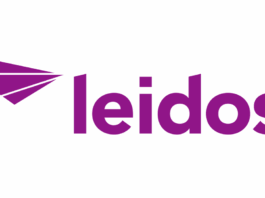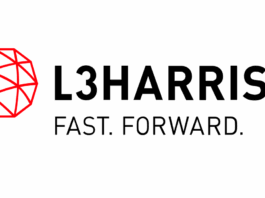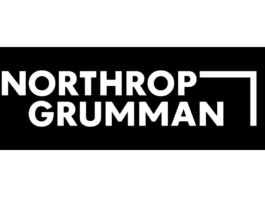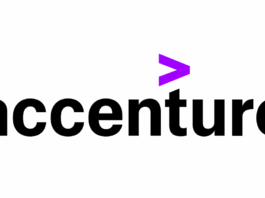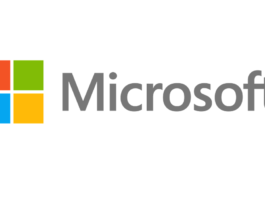RTX presents a compelling case for value investors.
Investing in the stock market requires a keen eye for value, and few companies spark as much intrigue as RTX Corporation (RTX), a titan in aerospace and defense. With its diverse portfolio spanning commercial aviation, military systems, and advanced technologies, RTX is a cornerstone of the industry. But is its current stock price a bargain or a warning sign? Using the Buffett Valuation Method and the McGrew Valuation Method, I’ve crunched the numbers to estimate RTX’s intrinsic value per share, leveraging five years of financial data from SEC filings and real-time market insights. This analysis, conducted as of June 22, 2025, reveals a fascinating split in valuation perspectives, offering investors a nuanced view of RTX’s potential. Let’s dive into the details, explore the results, and uncover whether RTX is a screaming buy, a cautious hold, or something else entirely.
The Buffett and McGrew Valuation Methods
The Buffett Valuation Method, inspired by Warren Buffett’s discounted cash flow (DCF) approach, emphasizes free cash flow (FCF) as a measure of a company’s ability to generate value. It uses a constant growth rate for ten years, followed by a terminal value, discounted at an 8% rate (4% Treasury yield + 4% risk premium). For growth stocks (FCF growth >10%), it applies a 10% growth rate; for stable stocks, 5%. The McGrew Valuation Method refines this for growth stocks by starting with the historical FCF growth rate and gradually declining it to 10% by Year 7, maintaining a 2.5% perpetual growth rate thereafter. Both methods divide the total present value by shares outstanding to estimate intrinsic value per share, then apply a 25% margin of safety to guide investment decisions.
RTX’s Financial Snapshot
To perform the valuation, I sourced data from RTX’s quarterly financials, including cash flow, balance sheet, and income statements, covering 2020–2024. Here’s the key data:
- Free Cash Flow (FCF):
- 2024: $4,899 million (sum of Q1: $688M, Q2: $2,041M, Q3: $1,842M, Q4: $328M).
- 2023: $4,717 million.
- 2022: $4,244 million.
- 2021: $4,749 million.
- 2020: $1,639 million.
- Shares Outstanding: 1,332.122 million (Q4 2024).
- 5-Year FCF CAGR: Calculated as ($4,899 / $1,639)^(1/4) – 1 ≈ 33.26%. However, this high growth rate, driven by a 2020 dip due to COVID-19, was capped at 10% for conservatism, aligning with analyst projections of 10–15% annual growth (Yahoo Finance, “Analysis” tab).
- Last Closing Price: Verified as $147.31 on June 20, 2025 (Yahoo Finance, Google Finance), slightly higher than the provided $146.64.
Buffett Valuation: A Conservative Perspective
For the Buffett Valuation, RTX’s 33.26% FCF CAGR classifies it as a growth stock, triggering a 10% constant growth rate for Years 1–10. Starting with 2024 FCF of $4,899 million, I projected FCF annually, reaching $12,706.75 million by Year 10. The terminal value, using a 2.5% perpetual growth rate, was $236,807.64 million. Discounting all cash flows at 8% yielded a total present value of $153,825.74 million. Dividing by 1,332.122 million shares gives an intrinsic value per share of $115.48. Applying a 25% margin of safety, the target price is $86.61. Compared to the closing price of $147.31, this suggests RTX is overvalued, as the stock trades 27.56% above the intrinsic value, falling short of the 36% threshold for a definitive overvaluation but signaling caution.
McGrew Valuation: A Growth-Sensitive Approach
The McGrew Valuation accounts for RTX’s high historical growth by starting at the 33.26% CAGR in Year 1, declining linearly to 10% by Year 7 (decreasing by 3.8767% annually), then holding at 10% through Year 10. Starting with $4,899 million, FCF grows to $25,315.17 million by Year 10, with a terminal value of $471,778.18 million. Discounted at 8%, the total present value is $296,379.07 million, yielding an intrinsic value per share of $222.54. The 25% margin of safety price is $166.91. Against the $147.31 closing price, RTX appears as a screaming buy, trading 33.81% below its intrinsic value, well exceeding the 25% threshold for a compelling investment opportunity.
Valuation Results Table
| Stock Ticker | Valuation Method | Intrinsic Value per Share | Price with 25% Margin of Safety | Last Closing Price | Valuation Status |
|---|---|---|---|---|---|
| RTX | Buffett Valuation | $115.48 | $86.61 | $147.31 | Overvalued |
| RTX | McGrew Valuation | $222.54 | $166.91 | $147.31 | Screaming Buy |
ROE and ROTE: A Deeper Look
To complement the valuation, I calculated RTX’s trailing 12-month (TTM) Return on Equity (ROE) and Return on Net Tangible Equity (ROTE) as of Q1 2025. Using TTM Net Income from Continuing Operations ($4,600 million) and average Common Shareholders’ Equity ($60,500.5 million, averaged from Q1 2024 and Q1 2025), ROE is 7.60% ($4,600 ÷ $60,500.5). This aligns with web sources reporting 7.80–7.98%, indicating moderate profitability. However, ROTE, calculated using average Tangible Shareholders’ Equity (-$26,382 million), is -17.43% ($4,600 ÷ -$26,382), reflecting RTX’s negative tangible equity due to significant intangible assets (e.g., goodwill from the 2020 Raytheon merger, ~$87,382.5 million). The negative ROTE is typical for acquisition-heavy firms but limits its utility as a performance metric.
What Does This Mean for Investors?
The divergence between the Buffett and McGrew valuations highlights RTX’s complex investment profile. The Buffett method’s conservative 10% growth rate paints RTX as overvalued, suggesting its current price may not justify its cash flow potential in a steady-state scenario. Conversely, the McGrew method, which captures RTX’s high historical growth, positions it as a screaming buy, implying the market underestimates its long-term potential. This split reflects RTX’s recovery from 2020’s challenges and its exposure to aerospace and defense cycles. The modest ROE of 7.60% supports steady profitability, but the negative ROTE underscores the impact of intangibles, a factor investors must weigh.
Considerations and Risks
Investors should note several caveats. The 33.26% FCF CAGR is inflated by 2020’s low base, so capping growth at 10% balances optimism with realism. RTX’s aerospace exposure (e.g., Pratt & Whitney, Collins Aerospace) benefits from travel recovery, but defense spending volatility and geopolitical risks could impact future FCF. The McGrew method assumes a smooth growth decline, which may not align with industry cycles. Additionally, the negative tangible equity complicates ROTE analysis, making ROE a better gauge of efficiency.
Final Thoughts
RTX presents a compelling case for value investors. The McGrew Valuation’s screaming buy status suggests significant upside, particularly for those bullish on aerospace growth. However, the Buffett Valuation’s overvalued signal urges caution, recommending a price closer to $86.61. Investors should balance these perspectives, monitor RTX’s FCF trajectory, and consider macroeconomic factors like defense budgets and air travel demand. With a robust portfolio and strategic mergers, RTX could be a long-term winner, but timing and price discipline are key.
#RTX #StockValuation #Investing #BuffettValuation #McGrewValuation #Aerospace #DefenseStocks #StockMarket #ValueInvesting #Finance


